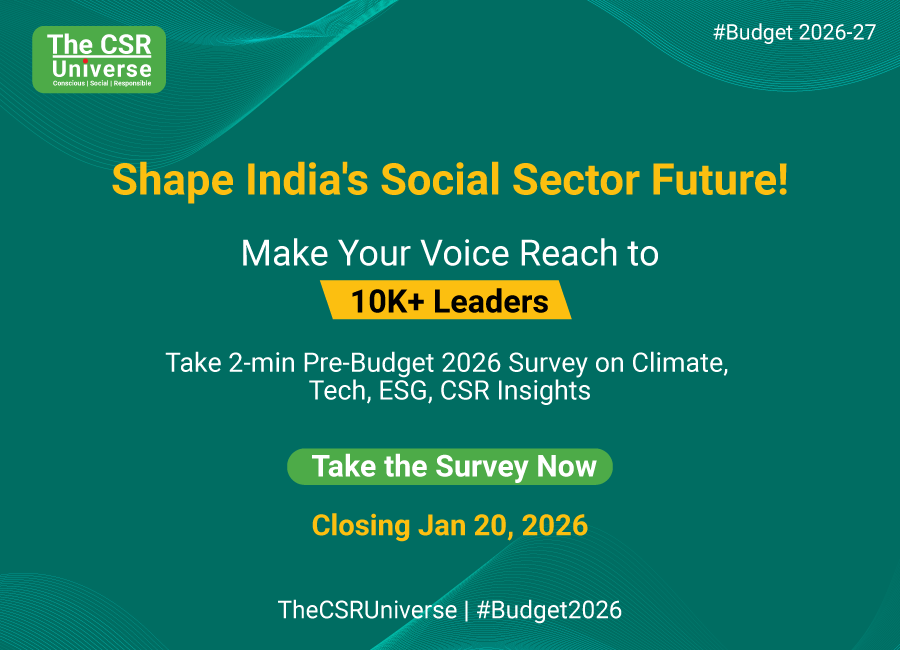Faith Taylor is the Global Sustainability & ESG Officer at Kyndryl. With enriching career spanning two decades in high-impact roles at Tesla and Wyndham Worldwide, and academic contributions at Montclair State University, Faith brings a wealth of knowledge and a unique perspective to the sustainability dialogue.
In this opinion piece,Faith Taylor delves into the paradoxes and potential of integrating sustainability with technology. Her argument illuminates the challenges and transformative possibilities that lie at this critical intersection, advocating for a smarter, more sustainable future powered by technological innovation. As a seasoned leader and a recognized voice in sustainability, Faith's commentary is not just timely; it's a call to action for businesses everywhere to rethink their strategies and realign their goals for a sustainable future.
Scroll down to read her opinion piece.
Accelerating net zero progress is critical. On the heels of another year of record-breaking heat and costly climate disasters, and with global emissions at a plateau, businesses are working to advance their sustainability initiatives. The pressure is on: Regulations are multiplying and there’s a growing need to manage risk.
As companies move closer to net zero, they increasingly acknowledge the essential role that technology can play in helping them achieve their goals. They know that their ability to meet requirements for third-party validation and integrate their complex data sources for a comprehensive approach to sustainability management depends on their technology strategy. But this recognition — that IT has the ability to supercharge sustainability efforts — doesn’t guarantee success.
This disconnect is the essence of an emerging paradox. There have never been more technological tools available to support sustainability initiatives, or more companies committed to reducing their emissions. Yet our research shows that translating sustainability intention into action — and using technology to achieve these goals — is a significant and widespread challenge.
And it’s one we must address if we’re going to scale sustainability solutions and strengthen environmental resiliency throughout a rapidly changing world.
Kyndryl recently released the findings of the Global Sustainability Barometer, a study that reflects the perspectives of more than 1500 global sustainability leaders and aims to bridge the sustainability-technology divide. According to the study’s findings, while 85% of organizations place a high strategic importance on achieving their sustainability goals, only 16% have integrated sustainability into their strategies. Further, 80% of organizations acknowledge technology’s crucial role in sustainability success, yet only a third believe they are making full use of it.
These findings come as a shift in stakeholder advocacy and present an opportunity for companies to tap into a growing sustainability market to help shape a better future. Today, investing in sustainability is more than just a regulatory requirement. Business leaders see sustainability as a catalyst for growth. At the same time, demands for climate action are on the rise. Customers want to know about the supply chains behind their favorite products and employees want to work for organizations that embody their values.
As the Chief Sustainability and ESG Officer for a leading provider of IT infrastructure services, I’ve seen what’s possible when businesses prioritize sustainability and harness technology to reduce their carbon footprints. No matter the starting point, if organizations have the right strategies and partners in place to unlock technology’s full potential, they can make strides in their sustainability efforts — and contribute to environmental progress.
Building a data-centric culture
To make targeted decisions that lead to smaller environmental footprints, companies first need to acquire comprehensive, accessible and accurate emissions data across their operations. This includes real estate, utilities, employee activities, and more. By streamlining processes, encouraging cross-functional teamwork and bridging data siloes, businesses can improve reliability in their reporting and develop their emissions baseline.
Ensuring data integrity is key to setting transparent goals that — when aligned with the latest science and validated by third parties — can protect company reputations against perceptions of greenwashing. Technology investment can enable companies to build this data-centric culture. Technologies such as AI and automation, IoT sensors and blockchain can help businesses gain valuable information across their operations and supply chain — an increasing focus as more companies look to control their scope 3 emissions.
In addition, sustainability management platforms and solutions can offer both visibility into a company’s environmental footprint — including their operations and IT estate — and tailored insights for reduction opportunities. This software can also position companies to better leverage AI, including the ability to improve reporting accuracy by identifying data-capturing errors.
Too many companies are foregoing the benefits that come with integrating sustainability into their business and data strategies. In one example, the Sustainability Barometer found that only 15% of organizations can provide their employees with real-time sustainability dashboards to guide more strategic decision making.
Aligning modernization with sustainability goals
Our study indicates that while 61% of organizations use AI to monitor energy use, only 34% use current data to predict future energy consumption — an essential capability as businesses chart the path ahead.
To strategically decouple carbon from growth, businesses must build with the end goal in mind. Trusted technology partners can help companies align their sustainability roadmaps and business strategies as they implement technology to drive growth and become more efficient.
For example, technology solutions that achieve modernization goals also can directly lower carbon footprints. Migrating to cloud and hybrid environments can reduce carbon emissions through cloud providers’ reliance on renewable energy. AI and automation can help businesses identify opportunities to gain efficiencies as they optimize their IT infrastructures. And investing in digital workplace solutions for remote and hybrid work can reduce the emissions associated with offices and employee travel.
However when businesses choose to proceed in bridging the gap between sustainability and technology, they must fully support their goals. Corporate boards should prioritize sustainability commitments with alignment across sustainability, finance and business leaders. And businesses need teams with a deep understanding of sustainability goals, as well as the necessary skills to operationalize them. Organizations also must educate and engage employees to empower them to make more sustainable decisions at work and at home.
While sustainability maturity varies among companies, our study indicates that fewer than half use technology to reduce their environmental footprints. We cannot wait for the emergence of a silver bullet to help us achieve sustainability goals. Innovative solutions can help us start making a meaningful difference today.

















.jpg)




